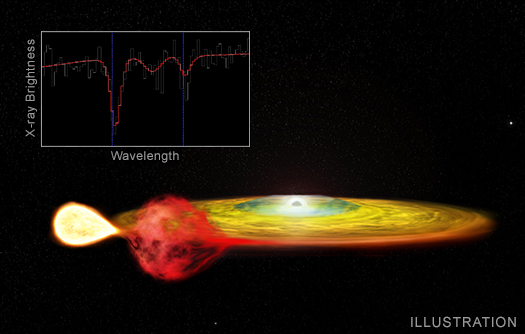Effect predicted by Albert Einstein spotted in a double-star system
This effect, known as gravitational redshift, is critical for maintaining GPS on Earth.
Gravitational redshift, an effect predicted by Albert Einstein that is crucial for maintaining the Global Positioning System (GPS) on Earth, has been observed in a star system in our galaxy.
Within Einstein's general theory of relativity there is an effect known as "gravitational redshift," in which light becomes redder because of the influence of gravity; the wavelength of a photon, or light particle, gets longer and appears redder as the wavelength climbs farther away from a gravitational well.
A gravitational well is the pull of gravity exerted by large bodies in space, like Earth. Under this effect, clocks on Earth's surface actually run slower than clocks far away and experiencing less gravity, so clocks on orbiting satellites run slower. Because of this, redshift has to be factored into calculating positions on Earth with GPS.
Now, while scientists have found absolute evidence of this effect in our solar system, they have found less evidence farther away because the observations are more difficult to make. But now, in a new study, researchers have spotted gravitational redshift in a two-star system a whopping 29,000 light-years (200,000 trillion miles or 321868800000000 kilometers) away called 4U 1916-053.
Related: Einstein's theory of relativity explained (infographic)
This far-off system consists of a dense core remaining from a star that's had its outer layers stripped away, and a neutron star, which is even denser and is created when a massive star collapses in a supernova. The pair are orbiting just 215,000 miles (346,000 km) from one another, or about the distance between Earth and the moon.
In this new study, researchers using NASA's Chandra X-ray Observatory not only discovered this system but also were able to show the effects of gravitational redshift. The scientists did this by analyzing X-ray spectra, or the amount of X-rays absorbed at different wavelengths, of the stars in this system.
Breaking space news, the latest updates on rocket launches, skywatching events and more!
Not only is this an important discovery because it is outside of our solar system, but it is the first strong evidence of this effect in a two-star system that has had either a neutron star or black hole, according to a statement from the Chandra X-ray Observatory. The scientists have won more time with Chandra in the upcoming year to study the system in more detail, according to the statement.
This work was accepted for publication to the Astrophysical Journal Letter; a version of the paper was uploaded to the preprint server arXiv.org on Aug. 3.
Email Chelsea Gohd at cgohd@space.com or follow her on Twitter @chelsea_gohd. Follow us on Twitter @Spacedotcom and on Facebook.

Chelsea “Foxanne” Gohd joined Space.com in 2018 and is now a Senior Writer, writing about everything from climate change to planetary science and human spaceflight in both articles and on-camera in videos. With a degree in Public Health and biological sciences, Chelsea has written and worked for institutions including the American Museum of Natural History, Scientific American, Discover Magazine Blog, Astronomy Magazine and Live Science. When not writing, editing or filming something space-y, Chelsea "Foxanne" Gohd is writing music and performing as Foxanne, even launching a song to space in 2021 with Inspiration4. You can follow her on Twitter @chelsea_gohd and @foxannemusic.

